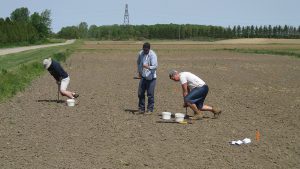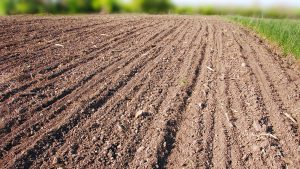Improving precision ag effectiveness
NEW ASSISTANT PROFESSOR AT GUELPH

JOHN SULIK, GEOGRAPHER by trade, joined the University of Guelph’s Department of Plant Agriculture in June 2018. His mission — to use a wide range of biological data to make precision agriculture actually pay for farmers.
More specifically, he hopes to use his geographical and technical expertise to help determine more effective ways of understanding things such as yield variability. This includes analyzing how different agronomic data indicators can be used by farmers to make more accurate in-season decisions, hopefully improving economic and environmental efficiency in the process.
BROADER SCOPE
As an assistant professor of precision agriculture, Sulik says he is interested in changing the way people think about technologies, including yield mapping and field prescription maps. While such technologies can be useful, he says they fail to reveal a lot of important agronomic information that producers require to make profitable decisions during the growing season.
But by measuring other plant and soil characteristics — through what Sulik calls “biophysical remote sensing” — and comparing that data to yield and prescription maps, farmers can better evaluate whether the information presented by precision agriculture technologies is worth acting on.
If a map showing nitrogen levels indicates the need for more fertilizer in a given area, for example, but fails to show why that nitrogen is needed — lack of in-soil availability as a result of ongoing water stress issues, for example — then such agronomic information is not useful. Indeed, acting on it may be economically and environmentally detrimental.
“It’s easy to generate a prescription map. The problem is it’s too easy; anyone can make a map but they may not be able to tell you anything about the agronomy,” says Sulik. “We need to use data differently in different conditions and geographies.”
“The advertising for precision agriculture technologies treats everything as uniform. There’s a lot more [context] that needs to be considered.”
VARIABILITY
Approaching precision agriculture by looking at different data-streams in comparison to one another is also important given the high diversity of growing conditions within the province — namely variations in regional climates and soil types.
Data, Sulik says, needs to be used differently in different conditions. This need is illustrated with what he refers to as the often “unproven” return on investment in variable rate techniques.
The problem, he says, is variable rate fertilizer application works as a “flat payoff function” where the level of fertilizer applied can vary, at times considerably, yet generate the same yield profitability; soil type, he adds, is a particularly significant factor here.
Applying 60 kg of nitrogen per hectare, for example, might bring the same returns as applying 120 kg per hectare, though with a considerably reduced cost.
“At some point there’s no benefit to applying more,” says Sulik. “Variable rate doesn’t always pay off. We want to know when it does and how we can act on it. I think the caution people have towards precision agriculture is valid.”
FUTURE RESEARCH
Sulik has already begun working on a number of projects with agricultural specialists at the University of Guelph, the Ontario Ministry of Agriculture, Food and Rural Affairs, and in the private sector. Currently, these projects involve looking at corn, soybeans, and edible bean yields, and seeing what other types of data can be used to explain yield differences within each crop.
As these projects only recently got off the ground, though, Sulik says he is still working to collect as much archival yield data as possible. The more data they have to work with, the more rigorous their analysis will be.
He adds the strategies they collectively develop will “not help everyone, every year,” but reiterates that determining more relevant information will certainly help farmers decide whether acting on yield and nutrient mapping makes good business sense. •










